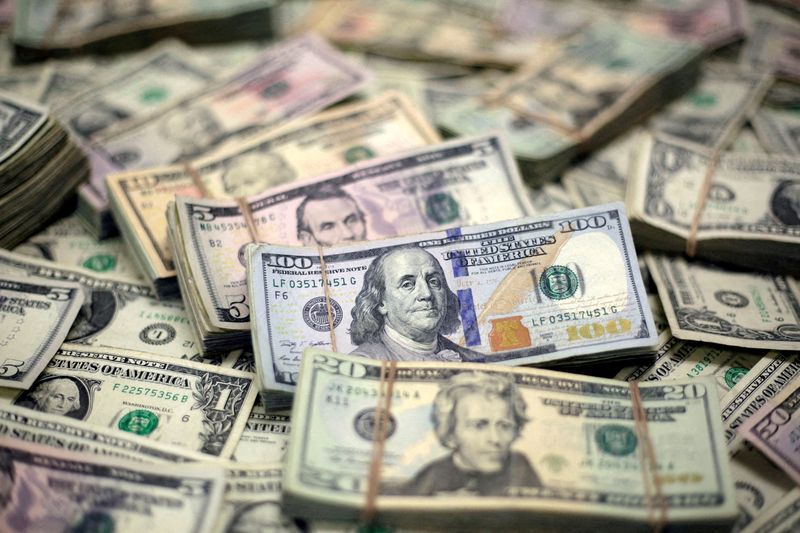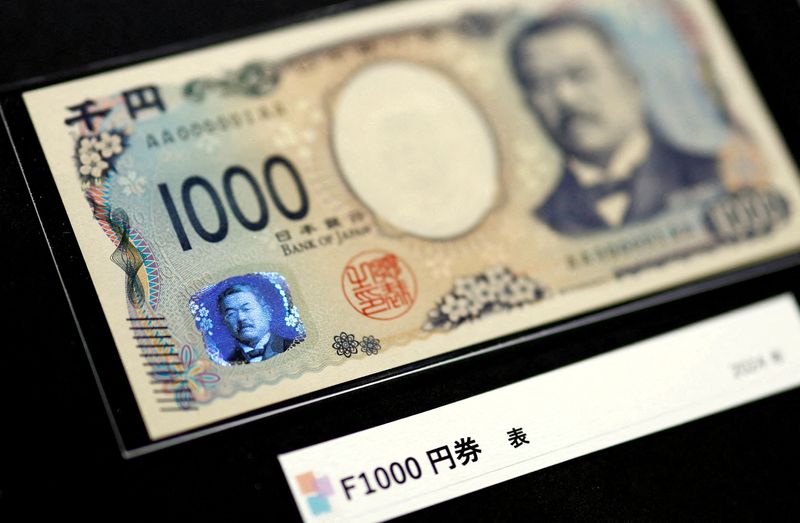
By Alun John and Brigid Riley
LONDON/TOKYO (Reuters) -The dollar climbed above 152 yen for the first time since late July on Wednesday and pushed the euro to an over three-month low, supported by expectations the Fed won’t rush to cut rates and investors bracing for a potential Trump election victory.
The U.S. currency was last up 1.1% on the yen at 152.82, its highest since July 31, the day the Bank of Japan raised interest rates to their highest in 2007, and, incidentally, gave global markets a sharp jolt.
The move in dollar/yen in recent weeks has been largely led by the dollar side of the pair, but on Wednesday those moves were spilling over into other pairs, with the euro up 0.95 % on the yen at 164.7, also its highest since July 31 and the pound up 1.06% at 198.19 yen.
“The yen, so far this year, has been the most sensitive currency to moves in U.S. yields so that’s driving dollar/yen higher, and then there’s the change in the government, and expectations that the Bank of Japan will remain cautious and that they may not even hike in December,” said Roberto Cobo,
head of G10 FX strategy at BBVA (BME:BBVA).
Japan is set to hold a general election on Oct. 27. Recent opinion polls indicated that the ruling Liberal Democratic Party could lose its majority with coalition partner Komeito.
The risk of a minority coalition government has raised the prospect of political instability complicating the Bank of Japan’s effort to reduce dependence on monetary stimulus.
“But the main driver for the Japanese yen remains the U.S. yield curve,” said Cobo, noting longer dated U.S. government bond yields had risen as markets reduced expectations for substantial rate cuts from the Federal Reserve this year.
The yield on the benchmark 10-year note reached 4.24% on Wednesday its highest since late July. Thanks to better than expected economic data, markets now see a 91% chance of a moderate quarter-basis-point cut in November.
A month earlier, investors saw a 25 bp move as certain, and some chance of a 50 basis point reduction.
The possibility of Republican former President Donald Trump winning the U.S. presidential election next month has further buoyed the dollar across the board.
The euro squeezed past its early August levels to $1.07770, its lowest since July 3, down 0.2% on the day, largely a victim of the dollar’s strength, but not helped either by recent weak economic data, and markets shifting to expect more rate cuts from the European Central Bank in the coming months.
ECB policymakers have begun to debate whether interest rates need to be lowered enough to start stimulating the economy, ending years of economic restriction, Reuters reported on Wednesday, citing conversations this week with half a dozen sources.
“The euro has clearly underperformed the British pound in the last two months or so, which also suggests there are some domestic factors affecting it,” said Cobo.
The euro was down 0.1% on the pound on Wednesday at 83.09 pence, hovering around a two-and-a half-year low.
Versus the dollar, the pound was flat at $1.29805 roughly a two-month low.
The dollar continued to pressure other currencies, and was at a two month high on the Swiss franc, up 0.2% at 0.8671 francs and was a whisker higher on the Canadian dollar at C$1.3828, ahead of a Bank of Canada meeting later in the day.

Markets see around a 90% chance of a large 50 basis point rate cut, leaving scope for the Canadian dollar to strengthen if the BoC goes for just 25 bps.
Also to come is the release of the Fed’s Beige Book summary of economic conditions, the latest sign of the health of the U.S. economy.
This post is originally published on INVESTING.


